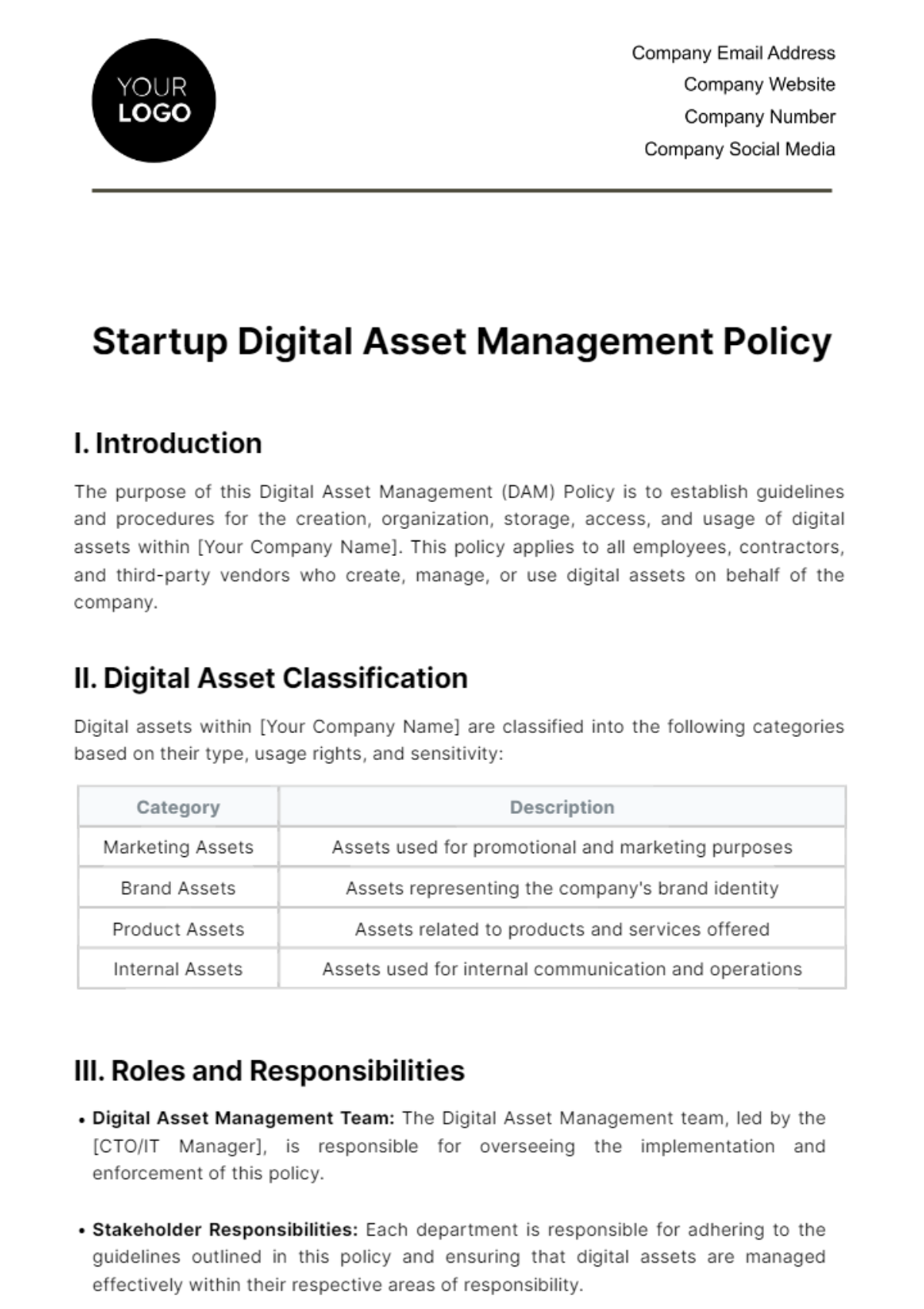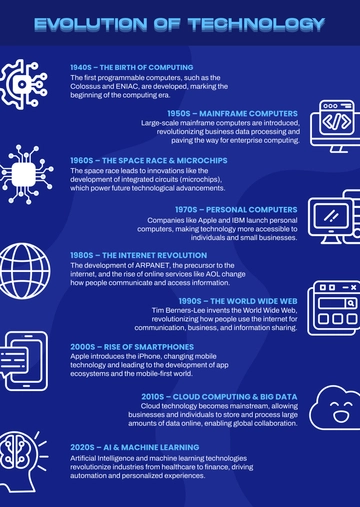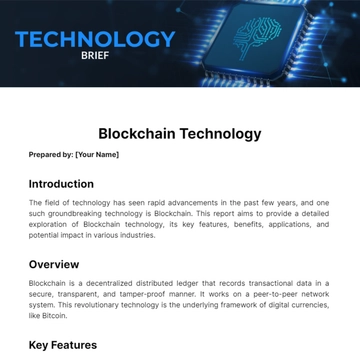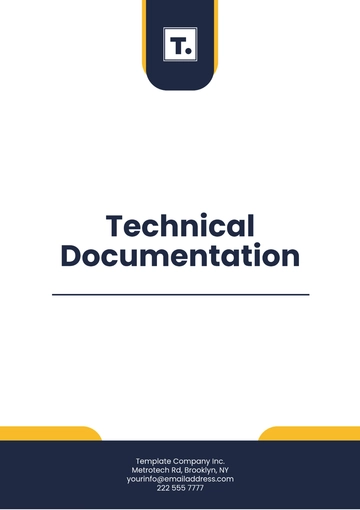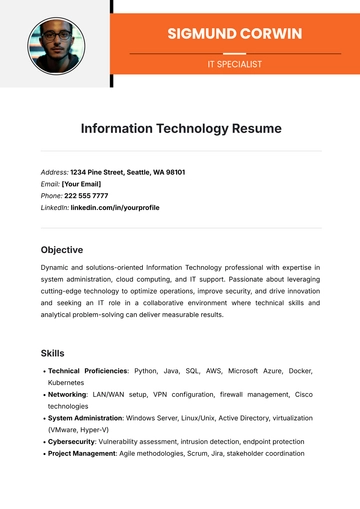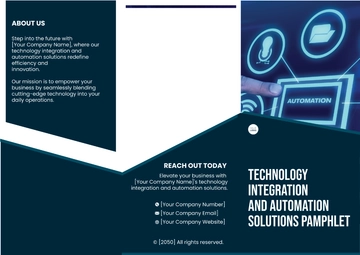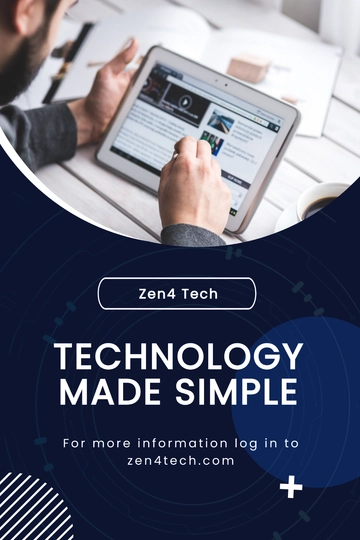Startup Digital Asset Management Policy
I. Introduction
The purpose of this Digital Asset Management (DAM) Policy is to establish guidelines and procedures for the creation, organization, storage, access, and usage of digital assets within [Your Company Name]. This policy applies to all employees, contractors, and third-party vendors who create, manage, or use digital assets on behalf of the company.
II. Digital Asset Classification
Digital assets within [Your Company Name] are classified into the following categories based on their type, usage rights, and sensitivity:
Category | Description |
|---|
Marketing Assets | Assets used for promotional and marketing purposes |
Brand Assets | Assets representing the company's brand identity |
Product Assets | Assets related to products and services offered |
Internal Assets | Assets used for internal communication and operations |
III. Roles and Responsibilities
IV. Asset Creation and Acquisition
All digital assets created or acquired by [Your Company Name] must adhere to the following guidelines:
Metadata Tagging: All digital assets must be tagged with relevant metadata, including title, description, author, creation date, and usage rights.
V. Storage and Organization
VI. Access Control and Permissions
Administrator: Full access to create, modify, and delete digital assets.
Contributor: Permission to upload and edit digital assets within specific folders.
Viewer: Read-only access to view digital assets without editing privileges.
VII. Usage and Repurposing
Internal Use: Digital assets may be used internally for business purposes, including presentations, reports, and training materials.
VIII. Retention and Disposal
Marketing Assets: Retained for a minimum of two years after the end of the marketing campaign.
Brand Assets: Retained indefinitely unless superseded by updated brand guidelines.
Product Assets: Retained for the lifecycle of the product or service, plus one year.
IX. Compliance and Legal Considerations
X. Monitoring and Enforcement
11. Training and Awareness
12. Policy Review and Updates
Startup Templates @ Template.net
